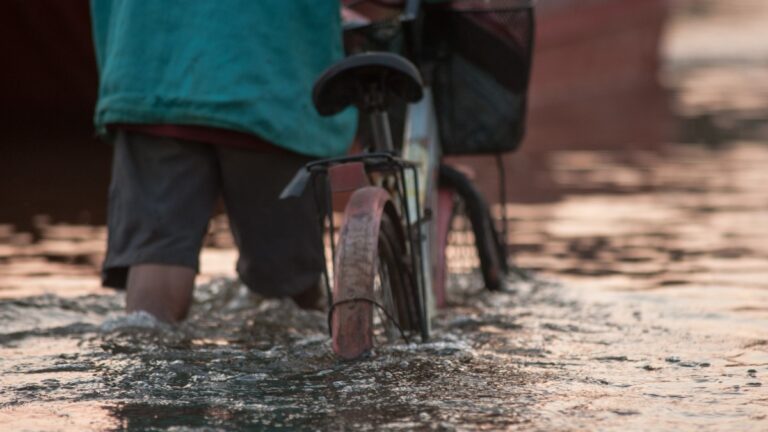The World Economic Forum, organized annually in Davos, Switzerland, assesses future risks to the global economy at its January meetings. This year, the greatest risks in the 2030s were estimated to be extreme weather phenomena and climate change.
Undesirable records were broken in 2023
2023 was the hottest year yet. According to the World Meteorological Organization (WMO), we reached a temperature 1.45°C higher than that of the pre-industrial times. This was due, in particular, to the use of fossil fuels, which has increased exponentially since World War II and is a dominant factor in global warming. Two-thirds of the climate problem is caused by the use of fossil fuels, about one-tenth by the destruction of non-renewable tropical rainforests, and about one-fifth by methane produced by mires, rice farming and cattle.
Another reason for the record breaking is the natural variation in surface temperatures in the Pacific Ocean. In the record years of 2023 and 2016, the so-called El Niño prevailed, which raised sea surface temperatures above normal. For the past three years, the region was dominated by La Niña, causing colder temperatures, which was also why the all-time global heat record was not broken.
In 2023, new records were reached again in the concentrations of the three most important greenhouse gases: carbon dioxide, methane and nitrous oxide. The most significant of these, by far, is carbon dioxide, which takes thousands of years to leave the atmosphere naturally; the second most important – methane – has a lifetime of only 11 years.
Glaciers will continue to melt for thousands of years
Mountain glaciers are melting at an accelerating pace. It is estimated that, by the end of the century, a large proportion of glaciers will only contribute a small amount of water to the world’s rivers. For example, in 2022 and 2023, a record-breaking amount – over 10% – of the mass of Swiss glaciers was lost. Last year also saw a new record in the melting of Greenland. The sea ice in the Arctic region continues to melt and in recent years the previously stable ice cover in Antarctica has also started to melt – the new minimum was broken in 2023.
The melting of glaciers is expected to continue for thousands of years, due to the high level of carbon dioxide already in the atmosphere. It is estimated that this will lead to a rise in seawater levels from about half a meter to 1m per century.
The negative trend in weather phenomena such as heat waves, floods, droughts and tropical storms can be turned around in the 2060s if we succeed in achieving the 1.5-2.0°C global warming stated in the Paris Agreement. However, the harmful trend will continue until the 2060s and there is no going back to the cooler climate of the 1900s.
Solutions for climate change from research and services
At the request of UN secretary-general António Guterres, the WMO launched the Early Warnings for All project to improve weather services in around 100 countries by the end of 2027. Approximately half of the US$3.1bn budget will be used to improve observation activities, and weather service infrastructure and competence.
The need for services and research data is increasing as climate change progresses, the security environment becomes more volatile and society’s weather sensitivity grows.
The Finnish Meteorological Institute collaborates actively with companies in the weather, space and maritime sectors. There is growing demand for our expertise in the planning and operation of climate-friendly forms of energy. Agricultural and forestry operators need high-quality information on the functions of carbon dioxide, methane and nitrous oxide emissions and sinks.
Colleagues from different countries have asked what the secret of our success is. My response has been the exceptionally challenging climate with snow and ice, and Nikolai I’s decision to establish the institute in connection with Alexander University in 1838. This science orientation has continued and strengthened to the present day. We have been extremely successful in the EU’s research programs, as well as in the Research Council of Finland’s applications together with the universities of Helsinki, Eastern Finland, Oulu and Aalto.
The Finnish Meteorological Institute will continue to actively develop its operations to ensure that various actors in society receive high-quality information and services to support their operations in the private and public sector in Finland and globally.
In related news, the Finnish Meteorological Institute recently began collaborating with the Finnish Food Authority to develop a system that enables more precise monitoring and analysis of agricultural land conditions, crop potential and fertilizer needs. Click here to read the full story.



